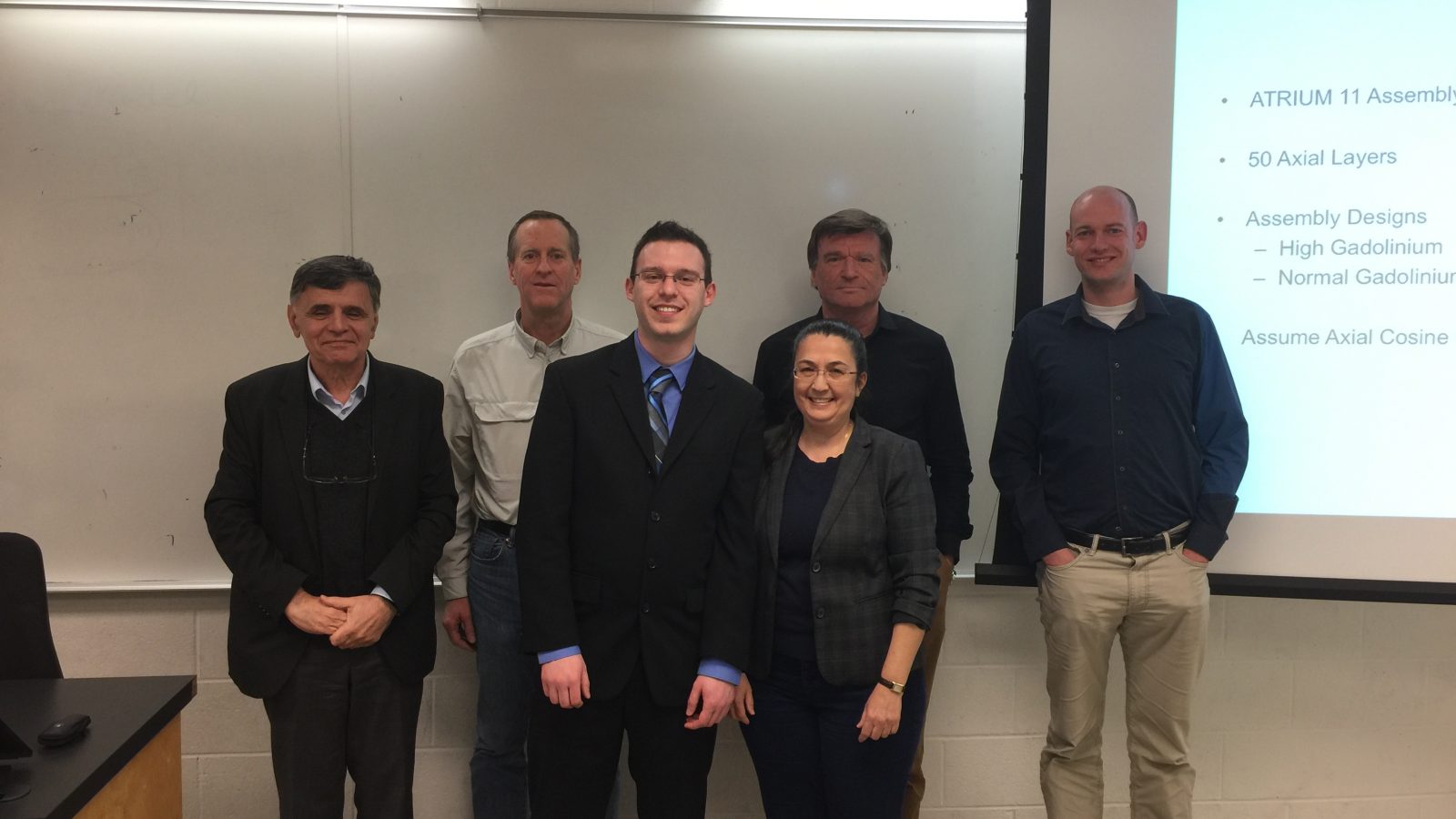On March 16, 2018, Alexander Sedgwick Bennett successfully defended his PhD dissertation, Methodology to Account for the Local Radial Void Distribution in BWR Reactor Core Simulation. Alexander’s PhD committee consisted of his advisor, Maria Avramova, and members, Dmitriy Anistratov, Ralph Smith, Kostadin Ivanov, and Nicolas Martin from Framatome Inc.
Abstract
BENNETT, ALEXANDER SEDGWICK. Methodology to Account for the Local Radial Void Distribution in BWR Reactor Core Simulation. (Under the direction of Prof. Maria Avramova.)
During boiling water reactor (BWR) cross section generation the water density distribution is normally assumed to be uniform in the radial direction. Current assembly designs are starting to push the limits of this assumption with higher gadolinium concentrations, higher uranium enrichments, and more complex geometrical designs. One solution is to couple a thermal hydraulic code capable of predicting pin by pin water densities with the lattice physics code for cross section generation. The issue with this solution is that it adds a significant amount of computational time to the cross-section generation. Instead a simplification must be made to reduce the computational requirements.
This dissertation is divided into two parts. The first part involves generating a surrogate model for a thermal hydraulic code. The purpose of the surrogate model is to accurately reproduce the thermal hydraulic code but with much less computational costs. The second part of the dissertation involves taking the local water density distribution into account. The goal of including the local water density distribution is to calculate more accurate neutronics quantities such as the pin power predictions.
In the first part of the dissertation, a surrogate model is created for the thermal hydraulic subchannel code F-COBRA-TFTM. The surrogate model is generated using sparse grid interpolation. In the surrogate model, the water density distribution is interpolated as a function of the radial power distribution and each surrogate model is specific to an assembly type. A surrogate model is generated for the ATRIUMTM 10 assembly, and it is able to reproduce the F-COBRA-TFTM water density distribution with an RMS error of 2.13%. Another surrogate model is generated to test its accuracy on the OECD/NRC BWR Full-size Fine-mesh Bundle Tests (BFBT) benchmark. The surrogate model obtains similar results as F-COBRA-TFTM on the BFBT benchmark. The surrogate model is effective at reproducing F-COBRA-TFTM while reducing the computational costs from the order of minutes or hours to the order of seconds.
In the second part of the dissertation, the effect of taking the local water density distribution into account is analyzed. At the assembly level, the local void distribution increases the worth of the gadolinium and the control blade. To take the local void distribution into account at the full core level, the surrogate model is coupled with the cross-section generation code. The local void distribution has the largest effect on the controlled cross sections. In the full core results, the eigenvalue is decreased over most of the cycle with the largest decrease at BOC due to a larger control rod density. The local void distribution causes a flatter power distribution due to decreases in power in the controlled assemblies in the center of the core. The local void distribution also causes the local peaking factor to decrease in most of the fresh assemblies.

